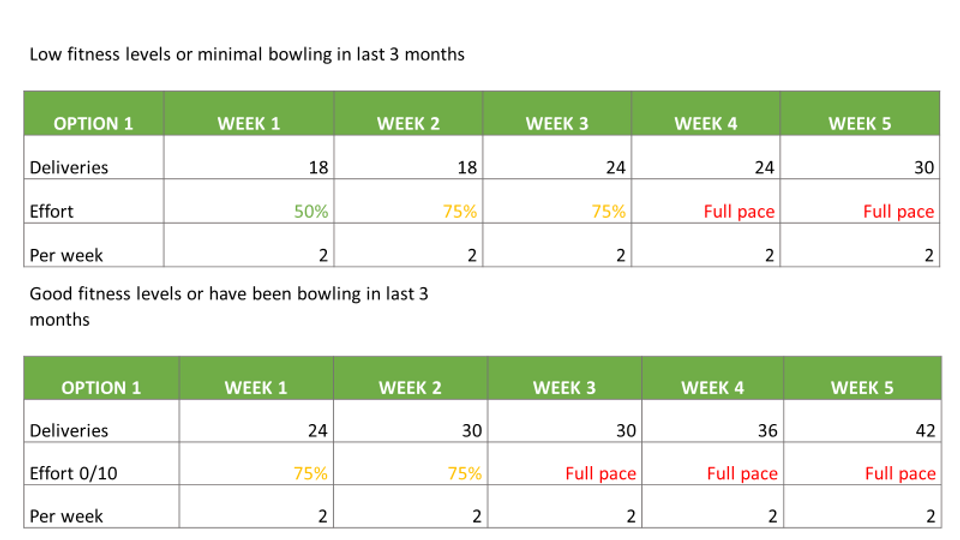he announcement that with effect from July 11th club cricket is back is wonderful news but does not mean that the body will be ready in time for those who have not been bowling during the lockdown. The body has the most amazing capacity to adapt to any load placed on it and protect itself from injury, providing that it has time to do so. Injuries occur through bowling too little followed by a sudden increase in activity with inadequate rest between sessions. The injury prevention vaccine is based around avoiding calculating the average number of balls bowled in the last 4 weeks to determine this week’s “dose”. In a normal build-up pre-season, you would start in January and add no more than 10% each week. However, starting now mid-season will mean it will take months to get up to match level bowling and so like in the return to football, we are likely to see more injuries.
It is important that players adhere to a phased return and not use the ECB or league rules of bowling limits as a safe guide to how many balls you can bowl each game. You are only safe to bowl the number of balls you have trained to do in the last month, so if you have not bowled during the last 3 months, you need to start gradually to progressively build up in bowling intensity and volume. Just in the way you would never run a marathon without a prolonged training program, bowling and throwing are just the same.
Keep a training diary – Record the number and intensity of balls you bowl in every situation. Try to think about how many you have bowled each week in the last month and at what intensity and use that as a baseline. Avoid increasing the number of balls and the intensity in the same session.
Where to start is slightly down to trial and error and depends upon your current fitness levels. Stronger, fitter athletes have greater resilience. Here are 2 examples that might help you plan how to return to bowling:
Performance = Fitness – Fatigue
Keep to the 7-4-2 rule – rest and recovery are key
The ECB advocates no more than 2 consecutive days of fast bowling with no more than 4 days of bowling in every 7-day period as on the rest days the body has time to react and become stronger. Any sign of back pain/ache in a young bowler should be regarded as a potential bone stress injury and the player should reduce the level of bowling back to a pain-free level. If the pain persists, ask for help from one of our team who have extensive young athlete and cricket specific knowledge.
Physiofit have extensive experience of screening cricketers of all ages and abilities which has been used with the Cheshire Emerging Players programme for over 14 years and can identify whether a problem is a physical weakness or a bowling technical fault. Contact Angie Jackson angie@physiofit.co.uk or call 01625 590444
This information is provided by Angela Jackson, Chartered Physiotherapist of Physiofit Ltd. It is a representation of her experience and research, but no liability is taken for the content of this document. It is meant as a guide to best practice and there will be variations for each individual player. For specific advice please do consult a physiotherapist with knowledge of sport and children. This material is not to be copied without the express permission of Physiofit Ltd.

